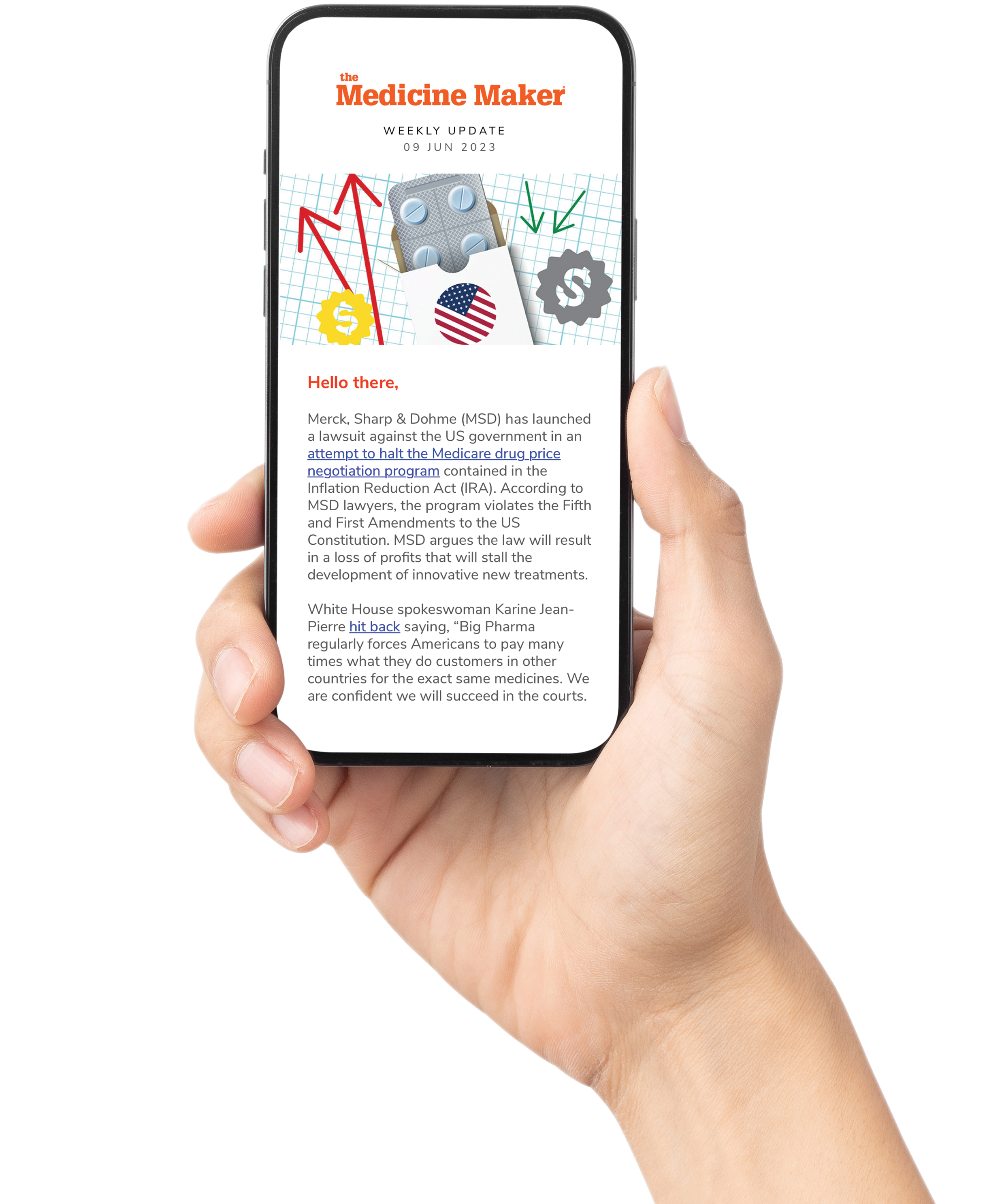
Earlier this year, AAPS conducted a two-day workshop, Beyond GLP-1s: Where the Science Will Take Business Next, to explore the GLP-1 landscape, including successes so far, the ongoing science and, of course, the challenges.
Moderator Carissa Jones opened day one by saying that GLP-1s are one of the most exciting and rapidly evolving areas of modern medicine. She is absolutely correct. GLP-1 receptor agonists have transformed the management of type 2 diabetes in ways that go far beyond glucose control. Unlike older therapies, which often worked regardless of blood sugar levels and carried a significant risk of hypoglycemia or weight gain, GLP-1s stimulate insulin release only when glucose levels are elevated and suppress inappropriate glucagon secretion. This dual action not only improves glycemic control but does so with a lower risk of dangerous lows. At the same time, GLP-1s slow gastric emptying and act on satiety pathways, leading to meaningful weight loss, which is important given that excess weight drives both the onset and progression of type 2 diabetes.
The impact that GLP-1s can have on weight loss has also caught the attention of the wider public – and the result has been skyrocketing market values for companies like Eli Lilly and Novo Nordisk.
Speaking during day one of the workshop, Tim Opler (a managing director in Stifel’s Global Healthcare Group) recalls a time in 2022 when he met up with a relative. “We're just having breakfast to catch up and he's like: ‘Tim, how do I get some of that Ozempic stuff?’ I replied, ‘I don't know. Go talk to your doctor.’ But he told me they didn’t have it. There's a moment in time where our entire country became obsessed with Ozempic. And that phenomenon remains even today.”
Drugs that can combat obesity are urgently needed. Rates of obesity are rising globally – and with obesity comes a host of other health issues. “In the US, 36.2 percent of the population has a BMI over 30,” says Opler. “I think you could argue that obesity is the central issue in public health in our country, and one way to think about that is to look at the effect of obesity on human mortality … The average obese American lives about three years less than they should because of their physical condition. There are over 200 disease complications associated with obesity.”
Some people still see obesity as a moral failing. In his presentation on day two, Jim Macguire, CEO of Biologics and More Consulting, says he often hears the questions: “Why can’t people pull themselves together?” or “Well, I quit smoking, why can’t people just lose weight the same way?”
But McGuire explained: “It’s not as simple as saying people just need more self-control. Obesity has become so widespread, with such complex biological underpinnings, that its associated comorbidities will only continue to rise – just as complications from type 1 and type 2 diabetes have risen over time.”
The market opportunities and manufacturing challenges
Beyond the health benefits of GLP-1s, there are also societal pressures at play that have served to supercharge demand. Consumers want to be thin, and they are willing to spend money to achieve this – which is unusual in the pharmaceutical world. Opler noted that pharmaceuticals aren’t usually something that people want to pay for. When doctors recommend something, patients will take the prescription, but they don’t want to personally go out and spend hundreds of dollars on medications.
But even without full insurance or Medicare reimbursement, consumers are actively going out to buy drugs for weight loss. “They’re doing it on the basis of aesthetics or appearance. The consumer wants three things. First, affordability. Second, they want to optimize how they look. And third, they want tolerability,” said Opler.
All of this means that the market size could be enormous – with Opler predicting the reality will go far beyond expectations. He cited a story from Investor’s Business Daily in 2022 that predicted the market would rise to $25 billion. In 2024, however, the market was valued at $54 billion. He said: “We think that the estimates of the market size are actually too low in general. A lot of brokerage houses are saying it might go to over $100 billion. We think that the real market size is $200 to $400 billion.”
This may sound exciting, but it also brings with it logistical challenges. McGuire believes that we are at the start of a wave that could reshape Chemistry, Manufacturing, and Controls (CMC) capacity across the entire industry. Although Novo Nordisk and Eli Lilly have not published many details about CMC, both semaglutide and tirzepatide are known to have complex production processes. For example, semaglutide is semi-recombinant. Most of the peptide chain is made recombinantly, but two other fragments are synthesized chemically and then linked together in solution-phase chemistry. Because different dose strengths are available for semaglutide and tirzepatide, a number of different pen injectors are also in circulation, further complicating supply chains.
Already the companies have struggled to keep pace with demand, so what happens if demand further increases? According to McGuire, a 15 or 16 percent CAGR in the market will mean that a three-fold increase in manufacturing will need to be found.
“To the best of my knowledge this doesn’t exist today, so it will need to be carved out of what’s already out there or built new. And the increases could be even higher,” he said. “Both Novo Nordisk and Lilly are preparing for this in a big way. Lilly has plans for a new factory in Indianapolis, and Novo is gearing up both in Denmark and the US for what's to come. And these are only the things that have been made public.”
Further improvements
Although GLP-1s are seeing striking results for weight management, there are limitations. Lean mass is often lost and weight loss tends to plateau after about one year. Once treatment stops, the patient will often regain weight. McGuire explained: “In fact, in the extension phase of the Novo Nordisk STEP 1 study, the group that had lost the most weight regained it quickly, closing the gap with the placebo group. This rebound phenomenon is common in the real world, and it means that ongoing therapy is required to sustain weight loss. Understandably, this can frustrate patients and lead to a cycle of starting, stopping, and restarting GLP-1 therapy.”
One solution could be that a patient uses GLP-1s for a defined period and then transitions to a different therapy that can help keep the weight off. Other potential avenues to improve GLP-1s include reducing side effects and gastrointestinal intolerance, and developing an oral formulation – something that Lilly is focusing on.
Looking further ahead, Opler suggested potential for a direct-to-patient market – perhaps even OTC products – as well as other pharmaceutical innovations that cater to modern consumers. A large portion of GLP-1 consumers are women – because societal pressures often lead women to want to be thin. There are also pressures on men. Opler explains that men often want to be fit, which means there could be consumer interest in muscle building drugs.
The AAPS workshop featured more than ten experts, including Richard DiMarchi, Caroline Geisler, Adam Mendelsohn, Jonathan Duoros, and more. Learn more about the workshop here.
The Origins of GLP-1s
One of the first sessions on day one of the AAPS workshop was a presentation from Jens Holst, who is based at the Department of Biomedical Sciences and the Novo Nordisk Foundation Center for Basic Metabolic Research at the University of Copenhagen. His lab isolated and sequenced natural GLP-1 and demonstrated its biological activity.
The story began when his group noticed that cells in the human intestinal mucosa lit up with antibodies against glucagon. “Now, you may think: glucagon is not supposed to be in the gut. And that’s true, but nevertheless, we found these cells in the gut. Back in the early 1970s, we realized that we had cells lighting up with antibodies against glucagon. At the time, we were hunting for peptides from the gut that could stimulate insulin secretion. Since glucagon itself is known to stimulate insulin secretion, this looked interesting.”
After 10 years, his group discovered that a molecule called glicentin was responsible for the immunoreactivity in cells. However, glicentin does not stimulate insulin secretion, so it couldn’t be the full story. With the rise of molecular biology, other researchers began sequencing proglucagon and found additional glucagon-like stretches: GLP-1 and GLP-2. Holst’s group quickly synthesized and tested these peptides. While predicted fragments had no effect, the naturally processed GLP-1 powerfully stimulated insulin secretion and also inhibited glucagon release. For the first time, they had identified a hormone with a dual mechanism for controlling blood glucose.
Human studies confirmed the promise. Physiological infusions of GLP-1 lowered blood glucose by boosting insulin, suppressing glucagon, and even slowing gastric emptying. It also reduced appetite and food intake in a dose-dependent manner – although higher doses came with nausea, which limited tolerability.
There was also the problem that GLP-1 is degraded within minutes by the enzyme DPP-4. This led to two parallel therapeutic strategies. One was to inhibit DPP-4, inspired by the success of ACE inhibitors in hypertension. Holst’s early studies in pigs showed that blocking DPP-4 protected GLP-1 from degradation and enhanced its activity, a finding that later translated into the first generation of DPP-4 inhibitors. These drugs improved glucose control but lacked weight loss or cardiovascular benefits.
The other strategy was to design GLP-1 receptor agonists resistant to both enzymatic degradation and renal clearance. Structural modifications, such as attaching fatty acid chains to bind albumin, extended the half-life from minutes to hours, days, and even a week. This principle underpins today’s blockbuster GLP-1 therapies.
“The conclusion is that GLP-1 is an ileal brake hormone that also promotes nutrient disposal via insulin secretion,” said Holst. “It has effects on food intake and appetite. It acts via afferent neurons and the CNS. It is degraded by DPP-4 and cleared by the kidneys. The DPP-4 inhibitors are effective in diabetes therapy, but do not provide cardiovascular disease protection or cause weight loss – and that is why they are likely to be forgotten soon.”




